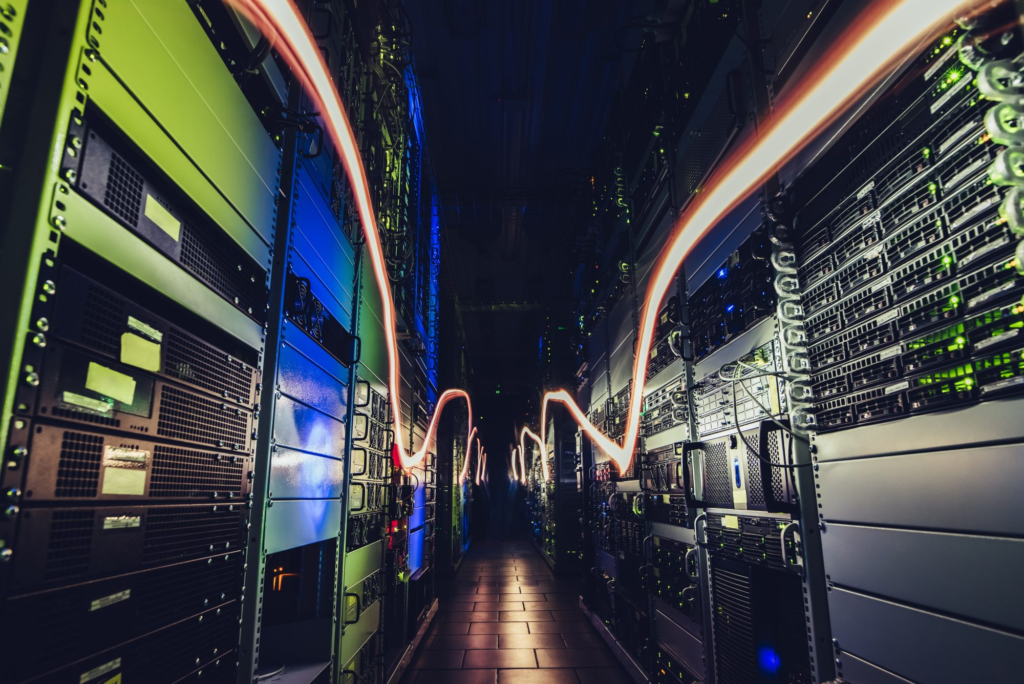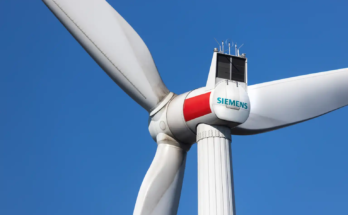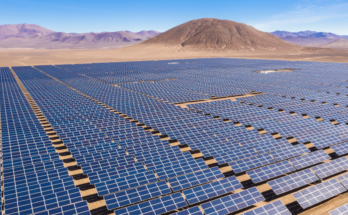
Artificial Intelligence (AI) stands poised to revolutionize various sectors, marking a paradigm shift comparable to the advent of the internet. The financial world echoes this sentiment as evidenced by Wall Street’s fervor, with the tech-heavy Nasdaq index soaring by 26% year to date, primarily fueled by the AI-related stocks frenzy. However, this transformative leap into the realm of AI comes at a substantial cost: a surge in energy consumption. As we delve into the intricate landscape of AI development, it becomes evident that powering innovations such as OpenAI’s ChatGPT demands significant energy resources. A glimpse into the University of Washington’s research reveals that ChatGPT’s daily operation alone could consume 1 gigawatt-hour, equivalent to the energy needs of 33,000 U.S. households. This sets the stage for a critical exploration of the burgeoning energy challenges entwined with the AI revolution.
II. The Energy Dilemma
ChatGPT’s Case

The University of Washington’s research unveils a critical facet of the energy challenge posed by AI, with a focus on OpenAI’s ChatGPT. The investigation sheds light on the staggering energy consumption associated with ChatGPT, estimating a demand of 1 gigawatt-hour per day. To put this into perspective, it equals the energy consumed by 33,000 U.S. households daily. This revelation sparks contemplation on the environmental impact, especially when compared to traditional email inquiries, emphasizing that ChatGPT’s operations are 10 to 100 times more power-hungry.
Industry Outlook
Arijit Sengupta, CEO of Aible, a leading enterprise AI solution company, provides a sobering perspective on the current state of AI adoption. Expressing concern, Sengupta warns of an imminent energy crisis triggered by AI proliferation unless corrective measures are implemented. His assertion that we are only at 1% of the anticipated AI adoption within the next two to three years underscores the urgency of addressing the potential energy fallout. This sets the stage for a deeper exploration into the industry’s outlook and the impending surge in AI-related energy consumption.
III. Data Centers and AI
Data Center Role

Data centers emerge as the central nervous system of advanced computing, playing a pivotal role in the digital landscape. These facilities, often managed by tech giants like Google, Microsoft, and Amazon, are the epicenters of the cloud computing industry. With thousands of processing units and servers, data centers form the backbone of the infrastructure that powers AI innovations. Understanding their role becomes essential to comprehending the magnitude of energy consumption entwined with the AI revolution.
Evolution of Processors
The evolution of data centers is marked by a significant transition from using traditional Central Processing Units (CPUs) to more advanced Graphics Processing Units (GPUs). These GPUs, manufactured by companies such as Nvidia, stand out as the most energy-intensive components in the AI ecosystem. Brady Brim-Deforest, CEO of Formula Monks, an AI technology consulting company, provides valuable insights into the heightened energy consumption associated with GPUs, revealing that they consume 10 to 15 times more power per processing cycle than their CPU counterparts.
IV. The Growing Energy Gap
Research Findings
Research conducted by Benjamin C. Lee, professor of electrical engineering and computer science at the University of Pennsylvania, and Professor David Brooks of Harvard, spotlights the escalating energy demands in data centers. Their findings reveal a substantial 25% annual growth in data center energy usage between 2015 and 2021. This surge, predating the national spotlight on generative AI and the exponential rise in ChatGPT usage, sets the stage for understanding the widening energy gap and its implications for sustainable AI development.
Renewable Energy Initiatives
Major cloud providers, including Google Cloud, Microsoft Azure, and Amazon Web Services, respond to the escalating energy challenge with substantial investments in renewable energy. Pledging to achieve net-zero carbon emissions, these industry giants signal a commitment to environmental sustainability. Microsoft Azure, boasting carbon-neutral status since 2012, aims to be carbon negative by 2030. Amazon, with a target of powering its operations with 100% renewable energy by 2025, aligns with its overarching goal of reaching net-zero carbon emissions by 2040. These initiatives mark crucial steps toward balancing energy-intensive AI development with environmental responsibility.
V. Solutions and Strategies
Shifting Computation
Benjamin C. Lee delves into the prospect of shifting computation based on the availability of renewable energy. Recognizing the challenges associated with achieving net-zero emissions in data centers, this exploration unveils potential strategies for optimizing energy consumption. As the industry grapples with the demand for increased computational power, understanding how computation can be strategically aligned with renewable energy sources becomes crucial in addressing the growing energy conundrum.
Efficiency Innovations
The landscape of AI development witnesses the rise of innovative solutions aimed at mitigating energy consumption. Companies focusing on efficient AI model usage, such as Aible, introduce groundbreaking technologies like serverless computing. Aible’s serverless technology, leveraging server resources on demand, emerges as a promising solution to curtail energy use in AI workloads. This shift towards energy-efficient practices signifies a broader industry trend, reflecting a commitment to sustainability and a recognition of the imperative to optimize energy resources in the pursuit of AI advancements.
VI. Industry Outlook
Industry analysts provide a compelling perspective on the transformative shift within the AI landscape, specifically focusing on energy solutions. The driving force behind this shift is operational efficiency, as companies recognize the imperative to optimize energy consumption for sustainable AI development. As the industry navigates these challenges, data center operators emerge as key players, concentrating data usage and becoming pivotal in determining the winners in this space. The concentration of resources and the strategic direction taken by these operators will shape the future of AI development, underscoring the critical intersection of operational efficiency, energy solutions, and the competitive dynamics within the industry.
VII. Conclusion
In conclusion, the ascent of Artificial Intelligence (AI) comes hand in hand with formidable energy challenges, as elucidated through the journey of ChatGPT and the broader AI landscape. The research from the University of Washington, coupled with insights from industry leaders, paints a vivid picture of the substantial energy demands accompanying AI development. The imperative lies in acknowledging this challenge as a catalyst for innovation rather than a roadblock. Emphasizing the need for groundbreaking solutions, the conclusion underscores the evolving landscape of AI. It prompts reflection on the symbiotic relationship between technological progress and responsible energy consumption, propelling the industry towards a future where innovation and sustainability harmoniously coexist.
FAQs
How does AI impact energy consumption?
AI impacts energy consumption significantly, with complex models like ChatGPT demanding substantial power. The energy requirements for training and running AI models, particularly those using advanced algorithms, contribute to increased consumption.
What role do data centers play in AI development?
Data centers serve as the backbone of AI development, providing the computational power necessary for training and running complex models. Managed by major players like Google, Microsoft, and Amazon, data centers play a crucial role in advancing AI technologies.
Are there solutions to reduce the energy consumption of AI models?
Yes, solutions are being explored to mitigate the energy consumption of AI models. Initiatives include exploring renewable energy sources, optimizing computation schedules based on energy availability, and the development of energy-efficient AI models and technologies like serverless computing.
What initiatives are major cloud providers taking to address energy concerns?
Major cloud providers, including Google Cloud, Microsoft Azure, and Amazon Web Services, are investing in renewable energy. They have pledged to achieve net-zero carbon emissions, with specific goals such as Microsoft’s commitment to being carbon negative by 2030 and Amazon’s aim to power its operations with 100% renewable energy by 2025.
How does the transition from CPUs to GPUs affect energy usage in data centers?
The transition from traditional Central Processing Units (CPUs) to Graphics Processing Units (GPUs) in data centers significantly increases energy consumption. GPUs, especially those manufactured by companies like Nvidia, are more energy-intensive, consuming 10 to 15 times more power per processing cycle than CPUs. This transition has contributed to the overall growth in data center energy usage.


